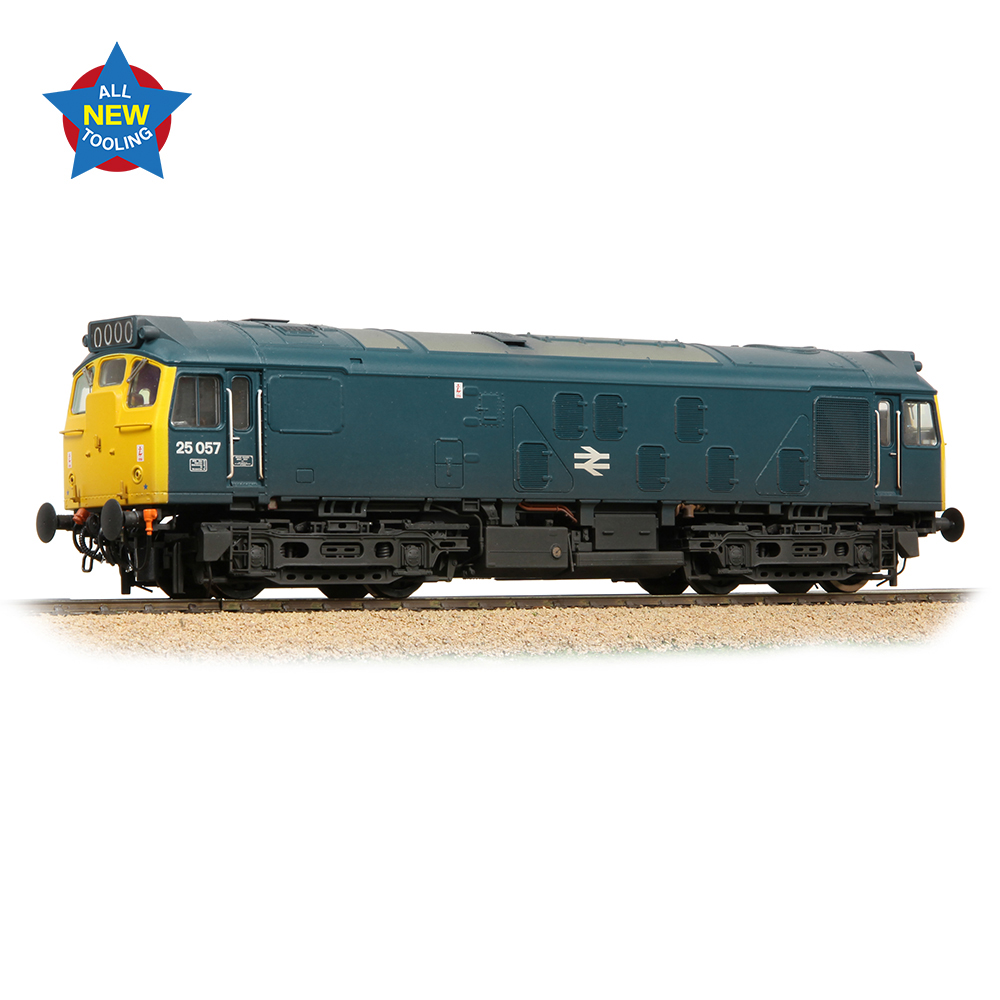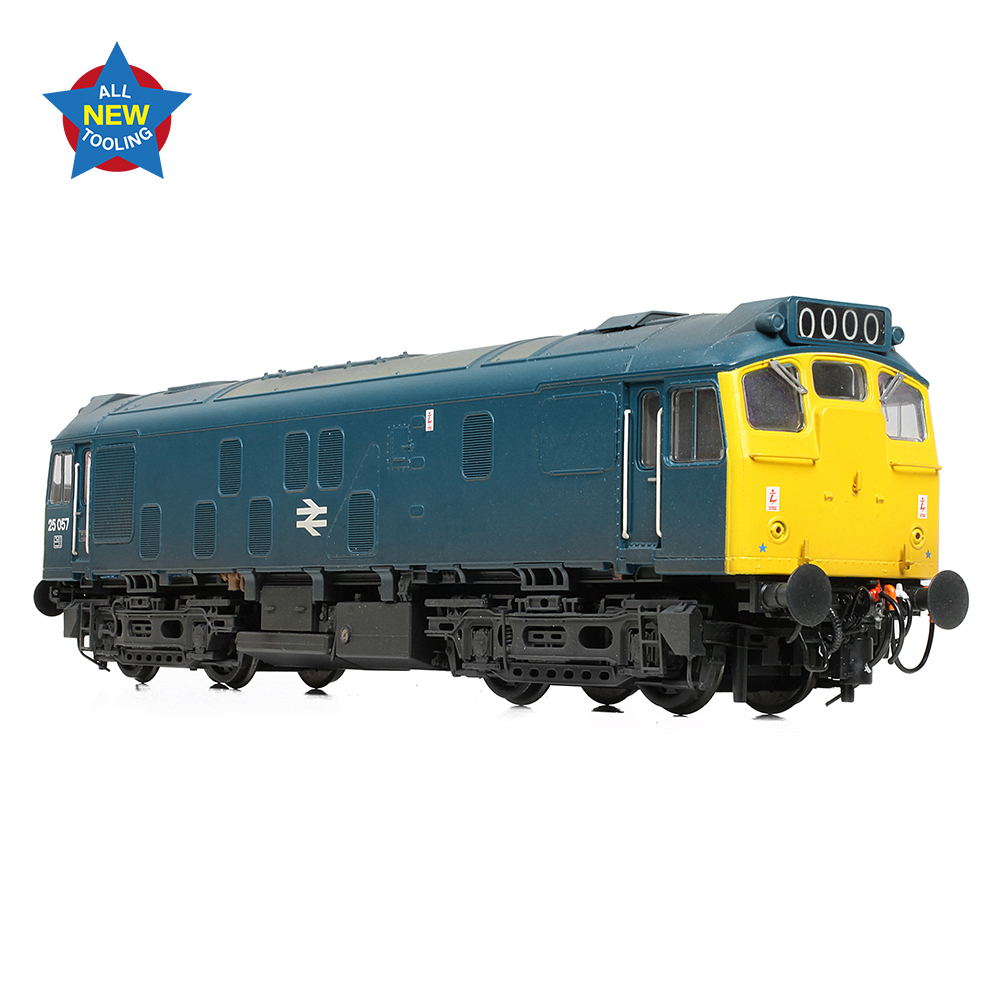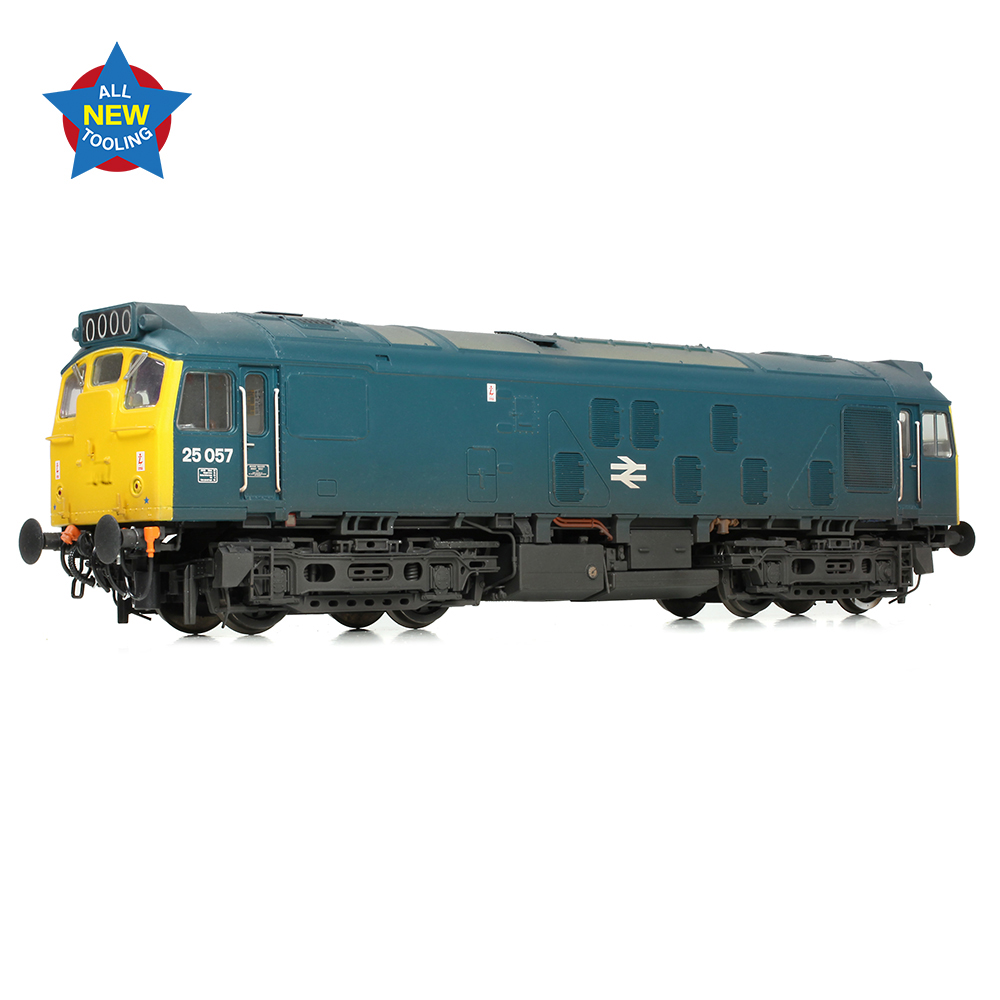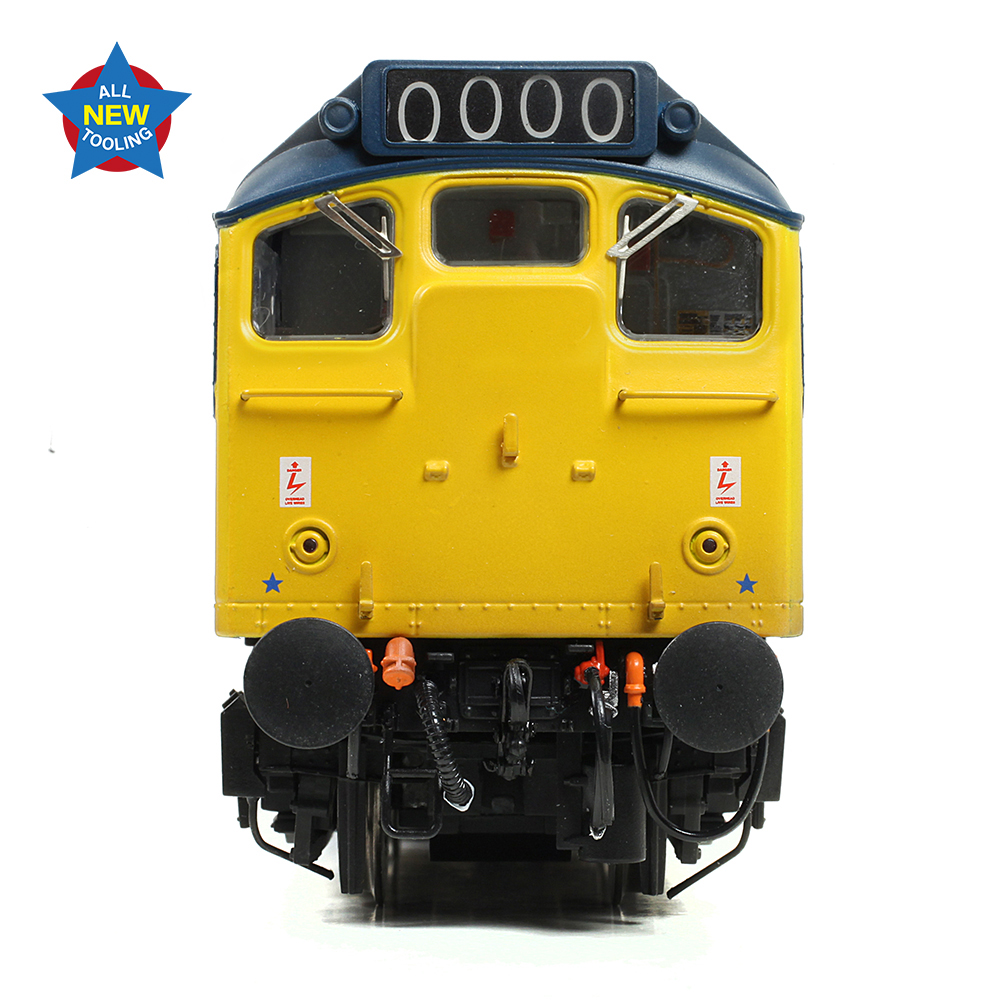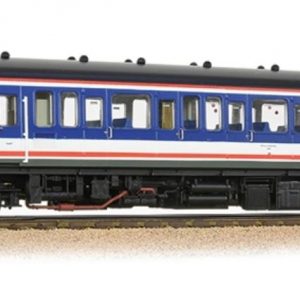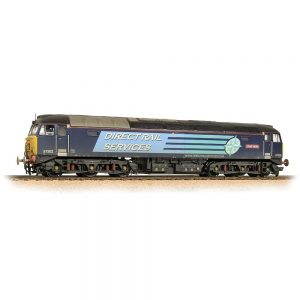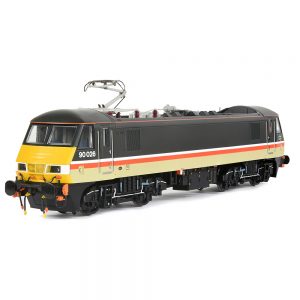Description
Following publication of the British Railways Modernization Plan in 1955, the British Rail Class 25 diesels were introduced into service in 1961 and were more powerful than the Class 24 Bo-Bo diesels introduced three years earlier. A total of 325 Class 25 Diesel Locomotives over several sub-types were built, most at BR Derby, but some were constructed at Crewe and Darlington with a further 26 built by Beyer Peacock of Manchester.
As Type 2 locomotives, the Class 25s were often seen working in pairs to increase operational power. The class was, however, a true mixed traffic locomotive, equally at home on either passenger or mixed freight duties. They were well suited to the task of replacing steam traction on duties over a wide area of the British Railways system and were allocated to numerous depots across the Eastern, London Midland, Scottish and Western Regions. Although not allocated to the Southern Region, they were often seen on incoming and through traffic from the other regions. Following closure of numerous lines in the late 1960s and the resultant loss of passenger work, during the 70s & 80s they were more likely to be seen on either freight, newspaper, parcels or specialized duties. with notable examples including the provision of train heating for steam hauled specials in their swansong years. The Class was finally withdrawn from service in 1987, but twenty preserved locomotives survive to the present day.
MECHANISM:
- Five pole, twin shaft motor with two flywheels providing drive to both bogies
- All axle drive
- Electrical pickup from all wheels
- Separate metal bearings fitted to each axle
- Diecast metal chassis block and bogie towers
- Diecast metal gearboxes, with gearing arranged for prototypical running speeds and haulage capabilities
- 5mm (OO gauge) wheels to NEM310 & NEM311 standards with authentic profile and detailing
- Detachable coupling pockets to NEM362 standards fitted to each bogie
- Designed to operate on curves of second radius (438mm) or greater
DETAILING:
- Bogies constructed from multiple components featuring full relief detail
- Separately applied metal detail parts, including grab handles, windscreen wipers and etched radiator grilles
- Sprung metal buffers
- Cab interior detailing which includes the control desk, seats and ancillary equipment, all with era-specific decoration
- Each model supplied with a full set of decorated, model-specific bufferbeam pipework and accessory parts including three-piece, body-mounted snow ploughs where appropriate
LIGHTING:
- Directional lighting, including illuminated headcode panels, switchable on/off at either end on DCC or Analogue control
- Cab lighting*, assigned to two DCC functions for separate switching of each
- Separately switched Engine Room lighting* (*when used on DCC)
- Authentic light colours and temperatures selected for each model based on era and application
DCC:
- Plux22 DCC decoder interface

